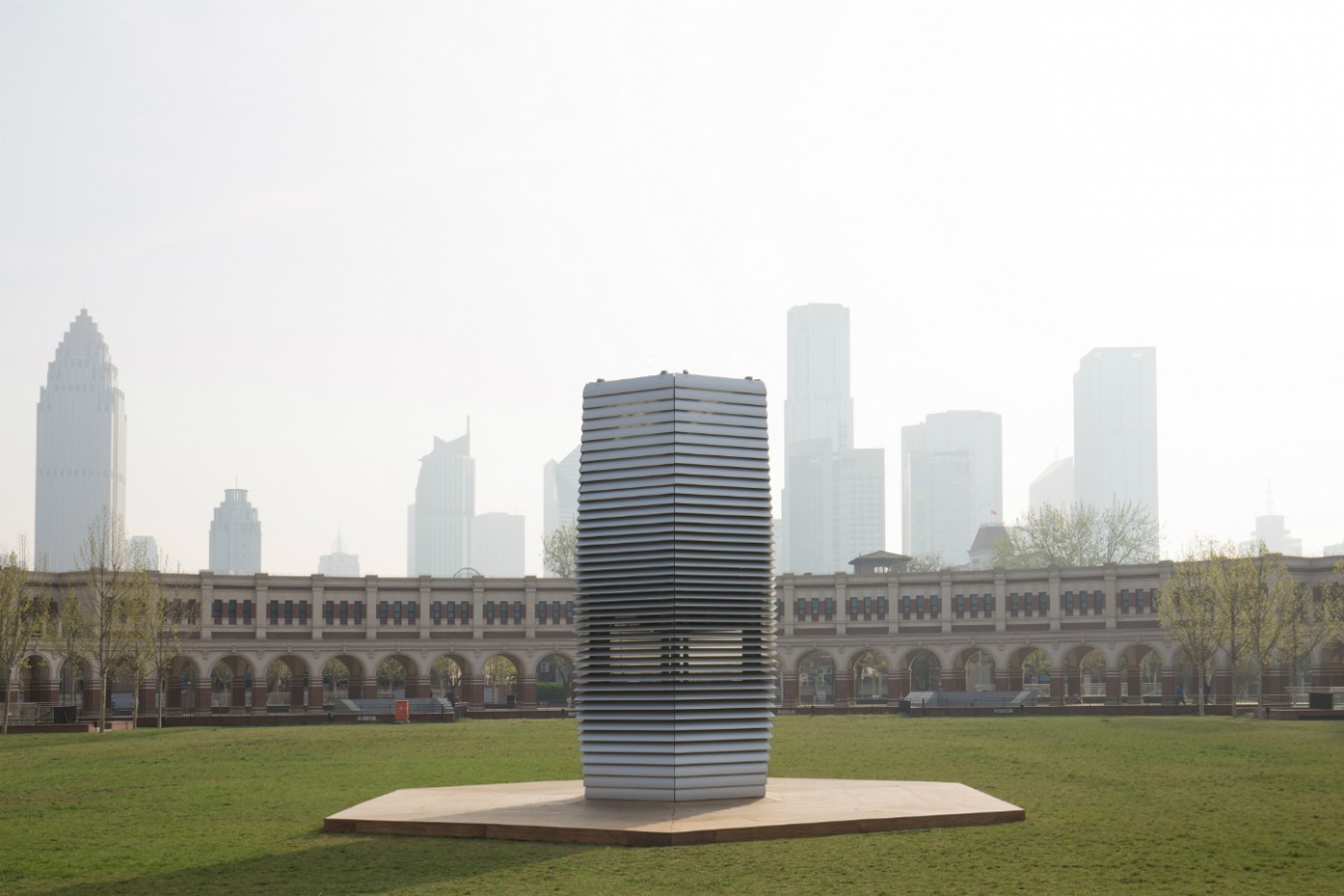Note: the following post has been widely reblogged recently. The reason why I did wait a bit before archiving it in | rblg.
It interests me as a king of "device" that can handle environmental parameters. In this sense, it has undoubtedly architectural characteristics and could extend itself into an "architectural device". Think here for exemple about the ongoing Jade Eco Park by Philippe Rahm architectes, filled with devices in the competition proposal. Or to move less further about our own work, with small "environmental devices" like Perpetual (Tropical) SUNSHINE, Satellite Daylight, etc. Architecture as device like Public Platform of Future Past, I-Weather as Deep Space Public Lighting or Heterochrony, or even data tools like Deterritorialized Living.
As a matter of fact, there is a "devices" tag in this blog for this precise reason, to give references for trhese king of architectures that trigger modification in the environment.
Via Science
-----
In Switzerland, a giant new machine is sucking carbon directly from the air
By Christa Marshall, E&E News



The world's first commercial plant for capturing carbon dioxide directly from the air opened yesterday, refueling a debate about whether the technology can truly play a significant role in removing greenhouse gases already in the atmosphere. The Climeworks AG facility near Zurich becomes the first ever to capture CO2 at industrial scale from air and sell it directly to a buyer.
Developers say the plant will capture about 900 tons of CO2 annually — or the approximate level released from 200 cars — and pipe the gas to help grow vegetables.
While the amount of CO2 is a small fraction of what firms and climate advocates hope to trap at large fossil fuel plants, Climeworks says its venture is a first step in their goal to capture 1 percent of the world's global CO2 emissions with similar technology. To do so, there would need to be about 250,000 similar plants, the company says.

"Highly scalable negative emission technologies are crucial if we are to stay below the 2-degree target [for global temperature rise] of the international community," said Christoph Gebald, co-founder and managing director of Climeworks. The plant sits on top of a waste heat recovery facility that powers the process. Fans push air through a filter system that collects CO2. When the filter is saturated, CO2 is separated at temperatures above 100 degrees Celsius.
The gas is then sent through an underground pipeline to a greenhouse operated by Gebrüder Meier Primanatura AG to help grow vegetables, like tomatoes and cucumbers.
Gebald and Climeworks co-founder Jan Wurzbacher said the CO2 could have a variety of other uses, such as carbonating beverages. They established Climeworks in 2009 after working on air capture during postgraduate studies in Zurich.
The new plant is intended to run as a three-year demonstration project, they said. In the next year, the company said it plans to launch additional commercial ventures, including some that would bury gas underground to achieve negative emissions.
"With the energy and economic data from the plant, we can make reliable calculations for other, larger projects," said Wurzbacher.
Note: with interesting critical comments below concerning the real sustainable effect by Howard Herzog (MIT).
'Sideshow'
There are many critics of air capture technology who say it would be much cheaper to perfect carbon capture directly at fossil fuel plants and keep CO2 out of the air in the first place. Among the skeptics are Massachusetts Institute of Technology senior research engineer Howard Herzog, who called it a "sideshow" during a Washington event earlier this year. He estimated that total system costs for air capture could be as much as $1,000 per ton of CO2, or about 10 times the cost of carbon removal at a fossil fuel plant.
"At that price, it is ridiculous to think about right now. We have so many other ways to do it that are so much cheaper," Herzog said. He did not comment specifically on Climeworks but noted that the cost for air capture is high partly because CO2 is diffuse in the air, while it is more concentrated in the stream from a fossil fuel plant. Climeworks did not immediately release detailed information on its costs but said in a statement that the Swiss Federal Office of Energy would assist in financing. The European Union also provided funding.
In 2015, the National Academies of Sciences, Engineering and Medicine released a report saying climate intervention technologies like air capture were not a substitute for reducing emissions. Last year, two European scientists wrote in the journal Science that air capture and other "negative emissions" technologies are an "unjust gamble," distracting the world from viable climate solutions (Greenwire, Oct. 14, 2016).
Engineers have been toying with the technology for years, and many say it is a needed option to keep temperatures to controllable levels. It's just a matter of lowering costs, supporters say. More than a decade ago, entrepreneur Richard Branson launched the Virgin Earth Challenge and offered $25 million to the builder of a viable air capture design.
Climeworks was a finalist in that competition, as were companies like Carbon Engineering, which is backed by Microsoft Corp. co-founder Bill Gates and is testing air capture at a pilot plant in British Columbia.
-----
...
And let's also mention while we are here the similar device ("smog removal" for China cities) made by Studio Roosegaarde, Smog Free Project.






